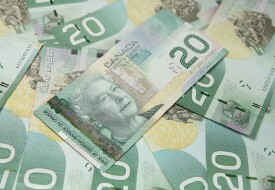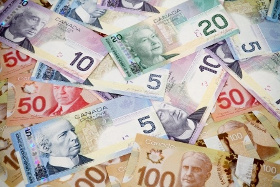The Canadian dollar is weakening to end the trading week as grim forecasts and disappointing numbers are sending the currency lower. The loonie was most impacted by a dovish central bank this week as interest rates were left unchanged and the governor sounding the alarm on the broader economy. The countryâs trade picture did not help matters.
According to Statistics Canada, the countryâs merchandise trade deficit widened to a six-month in November. The statistics agency reported that the nation posted a $2.1 billion shortfall, more than doubling the $851 million trade gap in the previous month. This was driven by the 2.9% decline in export as crude oil shipments cratered 18%.
The recent bear market in oil prices put an end to improving export performance, which many experts say will lead to a slowdown for the Canadian economy in 2019. Bank of Canada (BOC) head Stephen Poloz warned that lower crude prices âwill have material consequences for our macroeconomic outlook.â
Citing the global supply glut and slumping global demand, the BOC sounded the alarm about weakening sector investment.
While price differentials have narrowed in recent weeks following announced mandatory production cuts in Alberta, investment in Canada’s oil sector is projected to weaken further.
On Friday, February West Texas Intermediate (WTI) crude oil futures tumbled $0.76, or 1.45%, to $51.84 per barrel on the New York Mercantile Exchange.
What may be considered good news for Alberta, the BOC hit the pause button on normalizing monetary policy. The central bank refrained from announcing a rate hike, leaving its main interest rate at 1.75%. Investors are now doubtful that Poloz will pull the trigger on a rate hike anytime soon. The BOC has penciled in two rate hikes in 2019, but analysts think the central bank will choose to hit the brakes on monetary tightening.
In other economic data, the number of building permits climbed 2.6% in November from the previous month, beating median estimates of a 0.4% decrease. The New Housing Price Index was flat for the fourth straight month.
The USD/CAD currency pair rose 0.16% to 1.3259, from an opening of 1.3236, at 15:30 GMT on Friday. The EUR/CAD dipped 0.09% to 1.5207, from an opening of 1.5219,
If you have any questions, comments or opinions regarding the Canadian Dollar,
feel free to post them using the commentary form below.



Be First to Comment